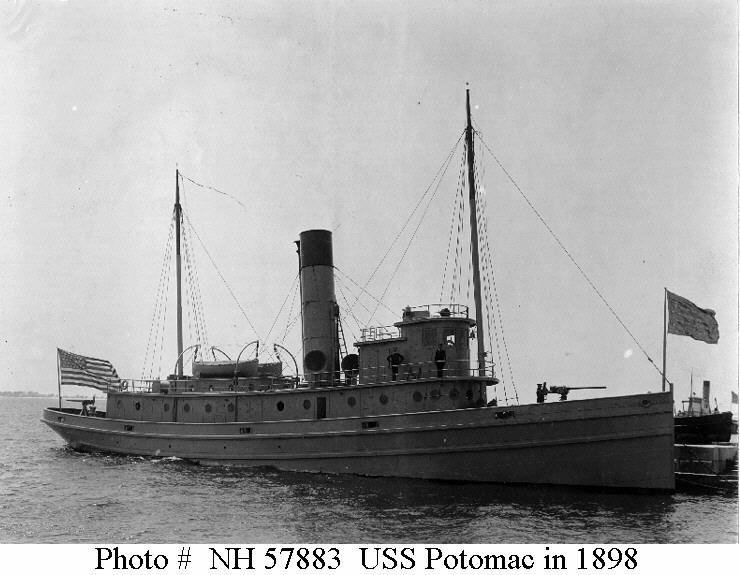United States Navy | |||||||||||||||||||||||||||||||||||||||||||
Submarine Tenders | |||||||||||||||||||||||||||||||||||||||||||
|  |
| The third Potomac, a tug built in 1897 as Wilmot by the F. W. Wheeler Co., West Bay City, Mich., was purchased by the Navy from the Ocean Towing and Wrecking Company 14 April 1898 for service in the Spanish American War, commanded by Lt. G. P. Blow. During the war, she served in the West Indies, and was retained by the Navy after peace was restored. In the ensuing years Potomac operated out of East Coast ports. She left Newport, R.I. 28 January 1914 to rescue vessels icebound off Newfoundland. Potomac was herself iced-in and abandoned 14 February 1914 but salvaged in the late spring, arriving New York Navy Yard 9 June 1914. After overhaul and repair, she became a tender in the Atlantic Fleet during 1915, and tender to the Canal Zone submarine squadron in 1916. Not documented in DANFS: While not being "assigned" as a tender until 1915; Potomac's envolvement with Submarines actually started much earlier: During the latter part of 1913, the five C class submarines...USS C-1 (SS-9), USS C-2 (SS-13), USS C-3 (SS-14), USS C-4 (SS-15), and USS C-5 (SS-16) ... under the overall command of a Lieutenant Junior Grade officer, successfully completed the longest cruise made up to that time by United States submarines operating under their own power. Accompanied by several surface ships, including submarine tenders USS Tallahassee and Severn, fleet tug USS Potomac and a (to date - unidentified) fourth surface ship -- the submarines completed a 700-mile passage between Guantanamo Bay, Cuba, and Cristobal, Panama Canal Zone, Panama...without serious engineering mishap.[See the section: Deployments: Early Panama Canal for more on this - ED]Back to DANFS: Late in 1916, she was transferred to the West Indies, and while based at Santo Domingo, served as transport and tug. After training exercises with the Atlantic Fleet off the Virginia Capes and a brief overhaul, Potomac returned to the Caribbean. Based in Haiti, she served as a transport for Marines, as well as carrying mail and stores. The tug was again home-ported at Santo Domingo in early 1920, and in July of that year was designated AT–50. She remained in service in the Caribbean until May 1922, when she returned to Norfolk. Decommissioned 26 June 1922, she was struck from the Navy List 31 July and sold to New Orleans & Bisso Towboat Company 1 December 1922. | History from the Dictionary of American Fighting Ships. | USS St. Louis | Table of Ships | Go to TenderTale Main Page | © 2006 Common Cents Computers |